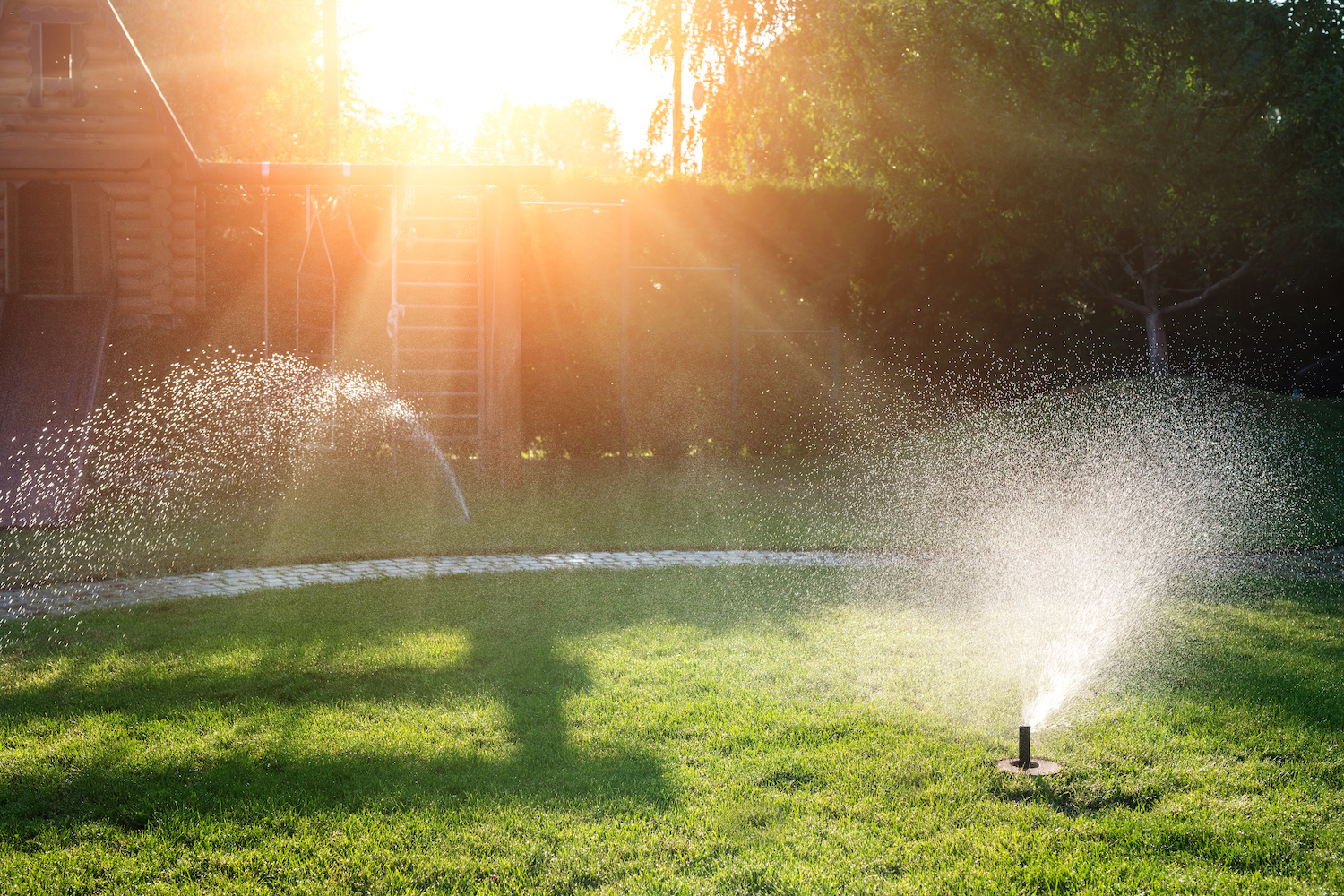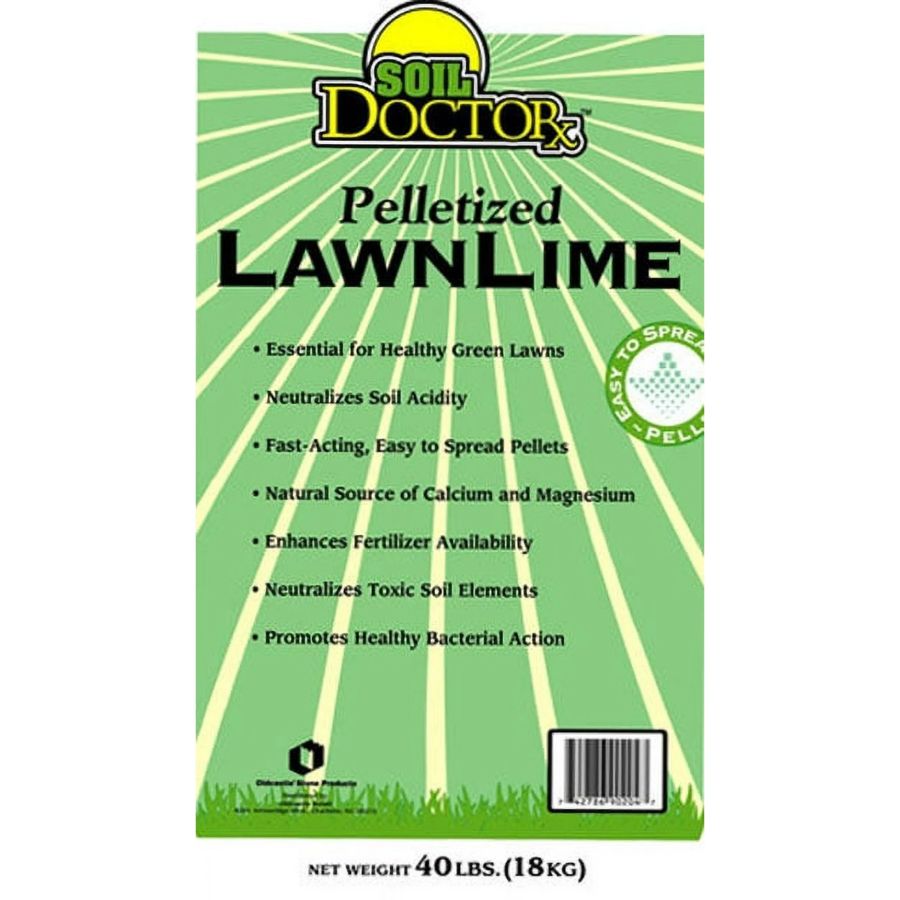Liming your lawn could be the answer to luscious grass come spring - here's when and how to do it
Liming during fall is the experts' secret weapon for achieving a luscious lawn, but you'll need to do it soon


You might have thought your lawn care days were over for another year, but think again. If you'd like a gloriously luscious green lawn come spring, liming your lawn could be the answer. The technique has been a secret weapon of lawn experts for years, but do you know what it actually is?
A pristine lawn continues to be every gardener's dream, no matter what other modern garden ideas they're pursuing. The trick to getting a lawn that shines all spring and summer is to nail the preparation work in the fall and winter, and while most of that work has been done already, there is one, very important, job left to do - liming.
To find out more, we've asked some gardening experts with decades of experience to guide us through the process of lawn liming and how it can transform our backyard. Here's when and how to do it for the healthiest grass possible as we head into 2024.
What does liming a lawn mean?

You may have never heard of liming your lawn until now, but it's a great tool to add to your kit. 'It's a simple yet powerful tool in our lawn care arsenal,' says founder of Lawn Chick, Sarah Jameson, 'especially where I live in the Northeastern US where most of our lawns tend to skew acidic'.
Lawn liming is focused on fixing the pH level of your soil, which has a huge effect on how your lawn grows in your backyard. 'Spreading lime on your lawn is like the lawn's pH therapy,' says Sarah. 'It involves applying lime to the soil to reduce acidity, Which is important because grass loves a neutral pH. When the soil is too acidic the grass can't absorb nutrients effectively, no matter how much we feed our lawn.'
If your lawn pH is off, all the other hard work you do to keep it healthy (like fertilizing and aerating) is for nothing. 'Spreading lime will allow your grass to utilize more of the fertilizer you spread, which helps that bag you bought at the hardware store deliver better results,' Sarah says. Almost all lawns could benefit from a pH test to help you determine how to keep your lawn healthy in winter, and this is the first place you should start before liming.
When should I lime a lawn?

Like everything in gardening, timing is everything. In this case, you have two options, however, you need to be aware that the full effects won't be for a few months.
The Livingetc newsletters are your inside source for what’s shaping interiors now - and what’s next. Discover trend forecasts, smart style ideas, and curated shopping inspiration that brings design to life. Subscribe today and stay ahead of the curve.
'The best time to lime your lawn is typically in the fall or early spring,' says Bryan Clayton, a lawn care professional with 22 years of experience and CEO of GreenPal. 'This timing allows the lime to react with the soil and adjust the pH level before the growing season.' Therefore, liming your lawn now would prepare it for the busy spring season when you want your lawn to really shine.
However, within this period there are some considerations to take into account to ensure lime is maximized to its potential. 'If you're dealing with extreme weather conditions, like a particularly rainy season or drought, adjustments are needed,' says Sarah. In both extreme wet weather and extreme drought, liming should be avoided. 'In heavy rain, your lime treatment may not be as effective due to run-off,' Sarah says. 'However, moisture can help incorporate the lime into your soil.'
'In my experience, a good soaking rain beforehand can set the stage perfectly, and spreading your lime at the end of the day so the evening dew can help any pellets settle and make contact with the soil is ideal,' Sarah concludes. When conducting any lawn care, be it liming or winterizing your lawn, it's essential you consider the environment and react accordingly to its needs.
How do I lime a lawn?

When it comes to liming a lawn, you first need to establish your soil's pH. 'You should start with a soil test to determine the current pH level and understand how much lime is needed,' says Bryan. Before you jump to cover your lawn in lime, remember that there can be too much of a good thing.
'Every lawn is unique and while lawns with a soil pH that’s too acidic will benefit from lime, alkaline lawns definitely don’t need it,' explains Sarah. The soil test will help you to determine if your lawn requires liming and how much.
Once you've established if your lawn needs liming, you next need to consider your method of application. Lime comes in a few different forms that all have different qualities. 'There’s powdered lime, which is good, but messy and hard to spread,' says Sarah. 'Next, there's pelletized lime, which is easy to spread but can take a while to break down, and there's also liquid lime that you can spread with a hose-end sprayer which is great for smaller gardens, but not as good for large yards.'
After this adjust the quantities according to your pH test and size of your lawn, and spread evenly across your backyard. Don't think your lawn care responsibilities are all over, though. One of the biggest gardening mistakes is failing to observe and respond to the needs of a backyard throughout the colder months, so be sure to check on your lawn between now and spring.
What mistakes should you avoid when liming a lawn?

The experts recommend liming but warn that it can have an adverse effect on your lawn if you make these common mistakes. 'One common mistake is skipping the soil test and just applying lime blindly,' says Bryan. 'It’s like taking medicine without a diagnosis; it might not be what your lawn needs.'
One of the most common beginner gardening mistakes when trying a new gardening technique is expecting to see transformation instantly. 'Results won’t come overnight,' says Sarah. 'Apply lime during the right weather, at the right time of year, and be patient.'
Finally, ensure you apply the product evenly. 'Patchy liming leads to a patchy lawn,' Sarah says, so take your time to guarantee you get all the spots. As is always the case, consistency is key to an even-looking and healthy lawn, so take your time with the task and ensure you use the right quantity for your lawn if you wan
Everything you need to lime your lawn

Price: $18.68
Color: Orange

Price: $48
Color: Black

Formerly a news writer for Livingetc, Amy completed an MA in Magazine Journalism at City, University of London, and has experience writing for Women’s lifestyle publications across arts, culture, and beauty. She has a particular love for the minimalist aesthetic mixed with mid-century furniture, especially combining unique vintage finds with more modern pieces. Her previous work in luxury jewellery has given her a keen eye for beautiful things and clever design, that plays into her love of interiors. As a result, Amy will often be heard justifying homeware purchases as 'an investment', wise words to live by.
